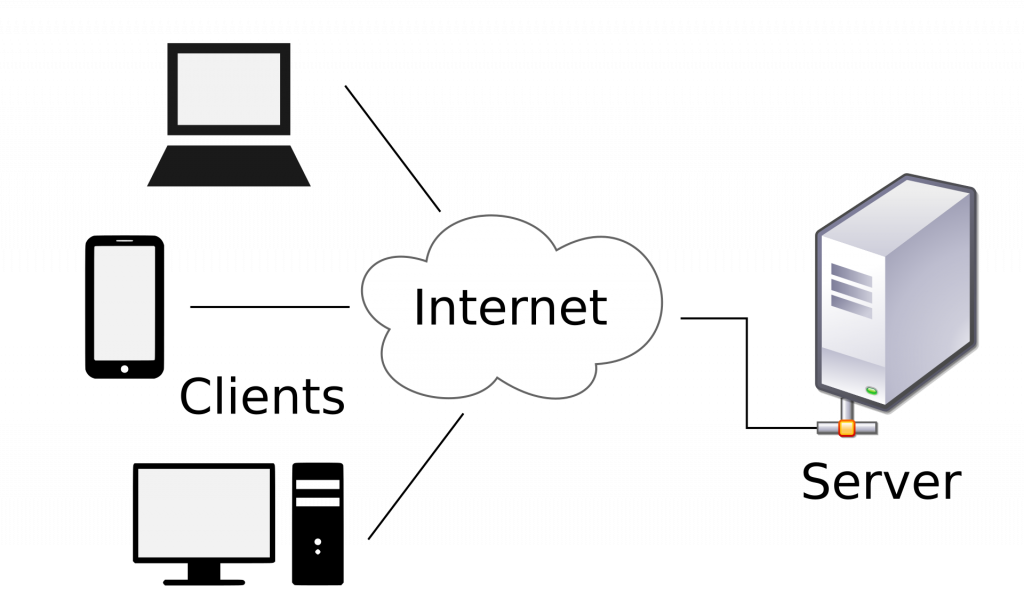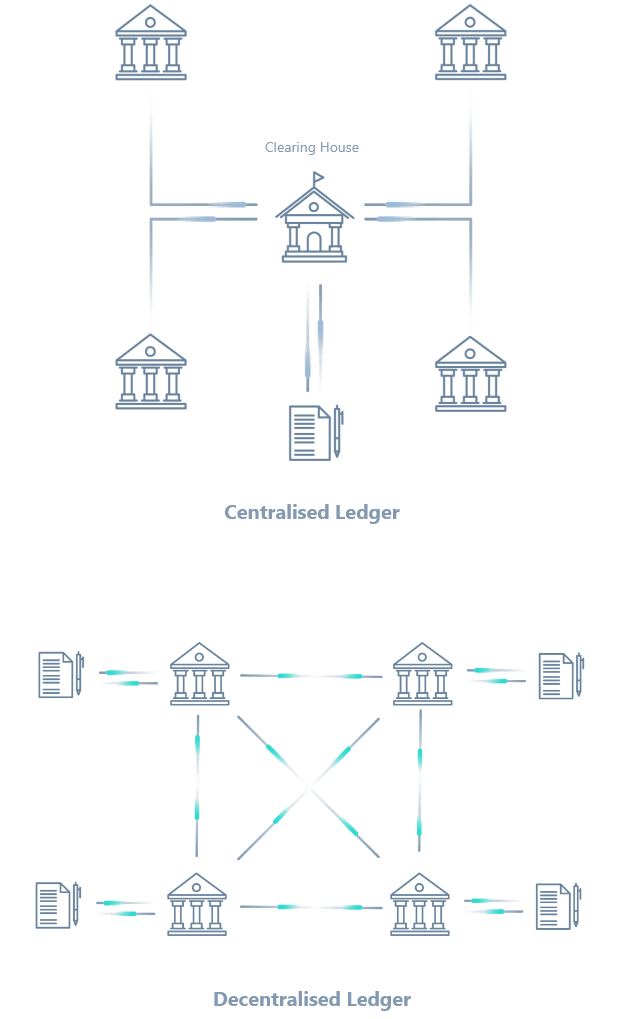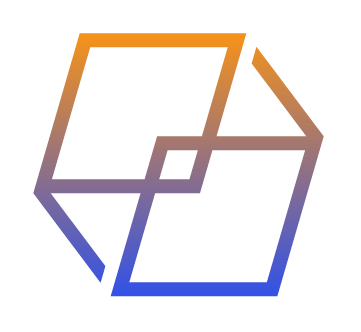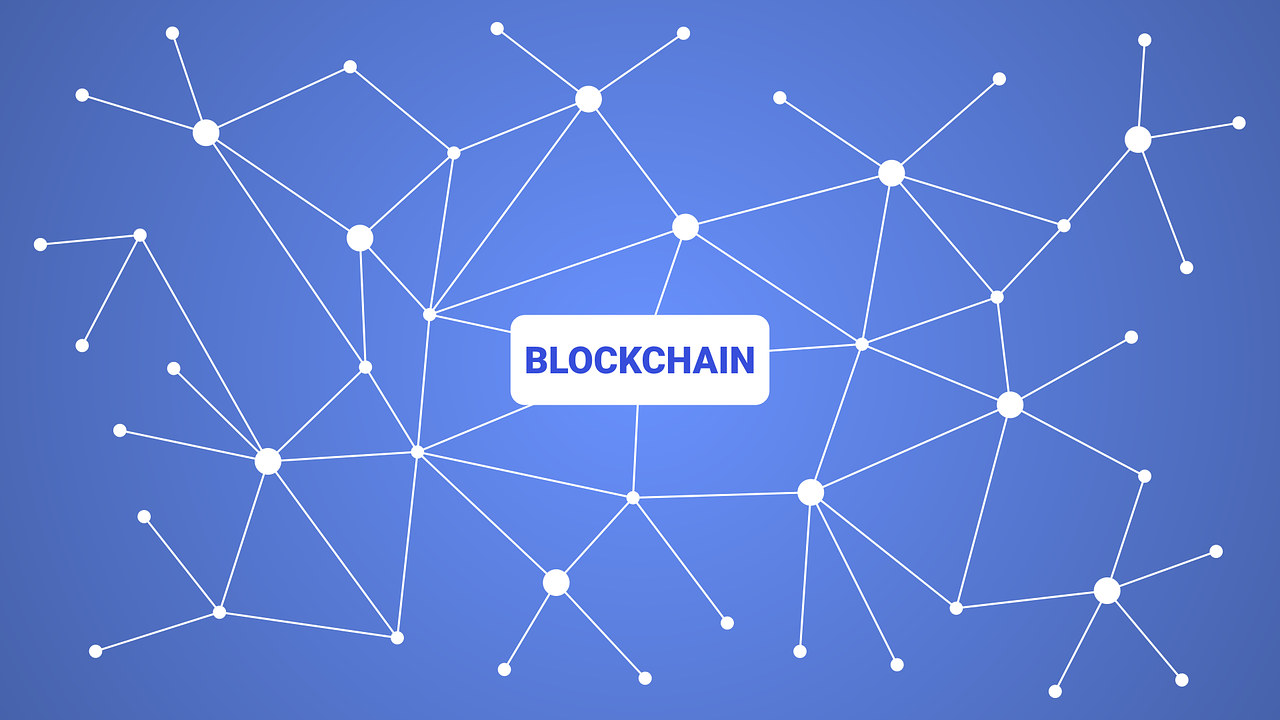This is the introductory lesson to blockchain and as such it should be understandable by anyone, even those who are hearing about it for the first time, which makes it very difficult to encapsulate all that blockchain is in a simple definition.
For this reason, we report some definitions that have been given of the blockchain, and then try to elaborate on them and draw some characteristics that we might attribute to this technology.
“The blockchain (literally ‘blockchain’) is a shared and ‘immutable’ data structure. It is defined as a digital ledger whose entries are grouped into ‘blocks,’ concatenated in chronological order, and whose integrity is ensured by the use of cryptography.”(Wikipedia)
“It is a distributed database that takes advantage of peer-to-peer technology and anyone can pick it up from the Web, thus becoming a node in the network.”(Wired)
“The blockchain is a ledger of securely shared decentralized data.”(Oracle)
“Blockchain, which literally means blockchain, is a large digital ledger in which entries are grouped into concatenated blocks in chronological order.”(Money.co.uk)
“Blockchain is a subfamily of technologies in which the ledger is structured as a chain of blocks containing transactions and whose validation is entrusted to a consensus mechanism, distributed over all nodes in the network in the case of permissionless or public blockchains or over all nodes that are authorized to the process of validating transactions to be included in the ledger in the case of permissioned or private blockchains.” (Blockchain4innovation)
From these six definitions, issues clearly emerge that need to be addressed individually:
- Distribution, decentralization and peer-to-peer
- Distributed ledger
- Security, cryptography and immutability
- Trustless, consensus algorithms
- Permissionless and permissioned
1- Bitcoin and the birth of the blockchain
Let’s forget the list of concepts for a moment, because it is impossible to talk about blockchain without talking about Bitcoin.
In fact, although there had already been theoretical proposals close to what is now meant by blockchain, such as David Chaum’s 1982 proposal or Stuart Haber, W. Scott Stornetta and Dave Bayer’s 1992 proposal, the first real blockchain was the one presented by Satoshi Nakamoto on October 31, 2008 in the white paper Bitcoin, the first cryptocurrency.
To cryptocurrencies we will devote a special article for beginners, such as this one, but let us stay on the blockchain.
The blockchain theorized by Nakamoto saw its actual implementation in 2009, with the launch of Bitcoin.
This brief historical excursus serves to underscore the inseparable relationship between blockchain and bitcoin.
Let us now turn to the technical aspects, describing the features of this technology.
2- Distribution, decentralization and peer-to-peer
Blockchain was born as a distributed and decentralized technology based on the peer-to-peer paradigm.
To explain these three terms, we need to delve into the world of computing and specifically into the field of computer networks.
Let us start with the fact that a network consists of a collection of computers, called nodes, in communication with each other.
Put in these terms, it is not unlike what we know as the Internet: a network of computer networks.
Within networks there are two main types of architectures:
- Client/server
- Peer-to-peer (P2P)
The client/server architecture (the one we are usually used to by browsing websites) is based on a division of nodes into nodes (servers) that play the role of service providers and the other nodes (clients) that request these services.

Think about what you are doing right now: with your device (mobile or fixed, it doesn’t matter) you are requesting a service, the page you are reading.
By typing in the address of this page, without going into technical details, what happens is that a request will be sent to the computer on which the files that make up the site are located: the server.
To summarize, you are clients who are requesting a service from a server.
Like you there are many other clients requesting services from the same server, and the clients are not in communication with each other.
We are looking at a centralized type of architecture, where there is a central entity that distributes services to clients.
This is not very different from what a bank, supermarket, or any other central entity that distributes services to clients does.
At the opposite extreme, on the other hand, we have the peer-to-peer (P2P) architecture, which, as the name suggests, is a peer-to-peer network without the need for coordination by servers or any other central body.

In such an architecture, all nodes in the network will be both providers and consumers of resources.
We speak in this case of decentralization.
The peer-to-peer paradigm does not find many applications in our type of society, which is decidedly more marked by centralization than decentralization, which might seem conceptually closer to anarchy.
In fact, it is due precisely to the advent of blockchain that decentralized models of, for example, finance can be brought to life, where you do not have central entities like the banks of traditional finance, but peer-to-peer actors exchanging money without the need for third parties.
3- Distributed ledger
We mentioned that blockchain is a subfamily of technologies, in fact it belongs to the larger family of distributed ledgers.
Before explaining what they are, however, we need to go back again to the basic concepts of the computing world and give a definition of a database.
A database (or database) is a set of structured data, a of digital storage contained in a physical medium (such as a hard disk).
Again, we are used to centralized architectures, where there is a central repository that is accessed by multiple users.
If we return again to the example of our site, behind the surface is a database containing all the data related to the site, e.g., the content of this page.
Once again the paradigm is client/server, so this data is contained in a central node that is responsible for distributing it to clients who request it.
Distributed ledgers (DLTs), or distributed logs, are similar to traditional databases in the sense that they are data stores, the difference being, however, that they are not centralized, but rather distributed and synchronized among all the nodes in the network, without the need for central administration.

The nodes in the network then can consult data but also write it down. We realize, therefore, that we are dealing with a peer-to-peer architecture.
The blockchain is a subfamily of DLTs and differs from other types of DLTs primarily because of the blockchain structure, from which the technology is in fact named.
The blockchain is a distributed and synchronized ledger that organizes data into blocks, which can be seen as containers within which there are, for example, transactions.
As the name suggests then, the ledger of a blockchain is formed by the succession of these blocks, containing transactions, linked to each other cryptographically, as we will see in the next section.
Moreover, DLTs, customarily, are more used in institutional settings, and there are nodes in the network, called validator nodes, that belong to large institutions and are in charge of validating the data to be added to the ledger.
In blockchain, on the other hand, starting with the idea proposed by Satoshi Nakamoto, anyone can join the network and validate blocks containing data. This topic will also be covered shortly.

4- Security, cryptography and immutability
Talking about the characteristic blockchain structure that distinguishes blockchain from other types of DLTs, we said that the blocks are cryptographically connected to each other.
This enters the realm of cryptography, which requires advanced mathematical knowledge, but we will try to explain as simply as possible this feature of the blockchain, which is recognized as one of its most important features and one that attracts the most interest from the IT world.
Each block in the blockchain is associated with an identification code that makes it impossible to confuse with other blocks, in fact representing it uniquely.
This identification code is called a hash and is obtained through a hash function.
Hash functions are mathematical algorithms that are widely used in cryptography because of their high level of security.
A hash function takes as input data of arbitrary length and returns an output that is a binary string of fixed size.
An example will make it clearer what is being talked about:

In the image we can see three inputs of different lengths on the left and on the right the three respective outputs, which, as you will notice, have equal lengths but are all different.
Again starting from this example, we can list typical features of hash functions, which well make explicit why they are considered so secure:
- Take the second and third inputs: they diverge only by one word but the output string is completely different. In fact, it would only take changing one character of the input to get a completely different output.
- Hash functions are unidirectional, which means that you cannot trace the input from the output; they only work in one direction.
If, starting from the first output of the image, we wanted to trace back to the input “Fox” we would have only one way to do it: through bruteforce, that is, by starting to create random inputs and seeing the outputs obtained after passing them to the function. Basically, you have to rely on chance and hope to guess the correct input.
There are different hash functions and the one used by Satoshi Nakamoto for the first blockchain, currently still employed by Bitcoin, is SHA256.
Back to blocks. Whenever a new block is created, it must be associated with a hash, which is obtained by passing the contents of the block inside a hash function.
From this it follows that the block identifier depends on the contents of the block, which will always be different. Thus it will be impossible to replace the data in a block with other data, since it would totally change the hash associated with it.

Not only that, each block contains within it the hash of the previous block, so the hash of a block X will be determined by the hash of block X-1, in turn determined by the hash of block X-2 and so on.
If the meaning of the term block was already clear, it should now also be clear why the term chain is used.
Blocks are concatenated together in a sequence that is impossible to break or mutate.
Let us think of a chain of 100 blocks and suppose we wanted to change a piece of data contained in block 50. This would involve changing all the blocks from 50 to 100.
This explains the term immutability, which appeared several times in the definitions seen initially.
Also contributing to security is decentralization. In fact, this digital ledger does not exist on a single physical medium.
Let us return to the example of a site based on a traditional database.
First, the data within it is not immutable like that of the blockchain, because it is not inextricably linked together.
Second, the database will be located within a server. It will also be able to be duplicated, to have backup copies.
Either way, it will be much easier for a hacker to get his hands on it, because he has to target the attack at a centralized entity.
A blockchain’s ledger, on the other hand, is decentralized and distributed among the various nodes that make up its network.
Assuming we have 1,000 nodes, it means that the ledger will be present in 1,000 separate physical locations, networked but independent, which makes the hacker’s job much more difficult, if not impossible.
All these features are very useful in avoiding a number of problems typical in accounting and the financial world, above all the problem of double spending, that is, spending the same currency/banknote several times in two different transactions.
This is precisely one of the reasons why blockchain was theorized in this way.
5- Trustless network and consensus algorithms
When one hears about blockchain one often hears the word trustless used, but what does it mean?
A trustless network is one whose participants do not need to know or trust each other, nor do they need a central entity to serve as a dictator for there to be trust.
We are in a decentralized network, so there is no central authority; rather, trust is achieved through special mechanisms that are called consensus algorithms.
That of consensus algorithms is a very large and complex topic, which we have covered separately in this lecture.
Moreover, the various blockchains have different mechanisms for achieving consensus, which in Crypto Web Academy we try to cover individually in advanced level articles, because they already require a solid basic knowledge of how a blockchain works.
Here we will just give a quick and generic explanation of what a consensus algorithm is, keeping it at a very high level.
The key thing to know is not so much the definition of a consensus algorithm, but why they are used.
We are in a decentralized network consisting of many nodes, and each of those nodes can both read the registry and write to it. Registry that, let us remember, is synchronized among the various nodes.
A question then arises: how do we decide who and what will need to be included within each new block?
Let us always take the example of a network consisting of 1,000 nodes, there is a possibility that some of these nodes are not honest and therefore might enter valuable data, for their own personal gain or to harm other nodes.
In order for new data to be added to the blockchain there needs to be consent from the nodes, consent that is achieved precisely through consensus algorithms, specifically designed to handle the possibility that there are malicious actors within the network.
We will go no further with consensus algorithms in this lecture, and I refer you again to the lecture devoted to this topic.
6- Permissionless networks and permissioned networks
A few lines should also be devoted to two other words you will often hear associated with blockchain:
- Permissionless
- Permissioned
These two words refer to two opposite types of networks.
Permissionless networks are networks in which anyone is allowed to take part by participating in consensus. Once again we are in the realm of full decentralization.
In contrast, permissioned networks are closed networks in which only established actors can participate in the consensus, so they are only partially decentralized.
Blockchains such as Bitcoin’s are permissionless, in fact anyone can decide to become a node in the network and start participating in the consensus process.
Permissioned blockchains do exist but they are more used in the private sphere, where you do not want to leave the ability for outside actors to access the network.

7- Our definition
To close this lecture, in light of all the things said so far, let’s try to give our own definition of blockchain that summarizes all the concepts exposed:
Blockchain refers to a technology belonging to the DLT family. A blockchain is a distributed, decentralized digital ledger that is synchronized among the nodes in the network that make it up.
The ledger consists of data organized into blocks, cryptographically bound together and added to the chain after reaching consensus among the network nodes about a new block, through the use of consensus algorithms, which make the blockchain trustless.
Finally, a blockchain can be permissionless or permissioned, depending on its intended use.(CryptoWebAcademy)

